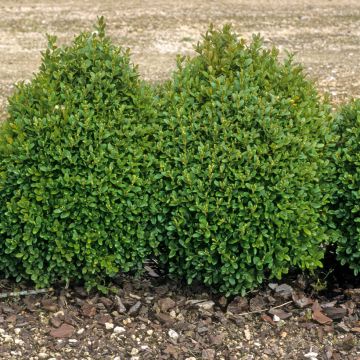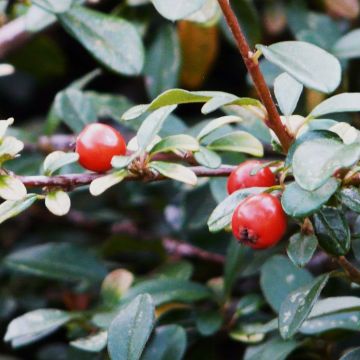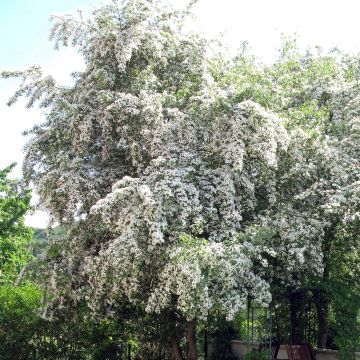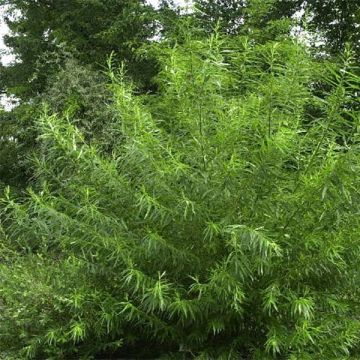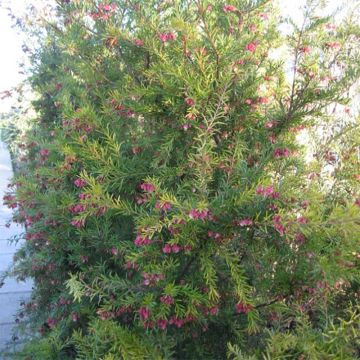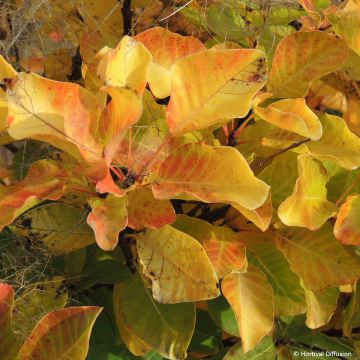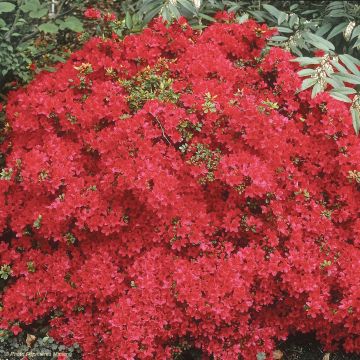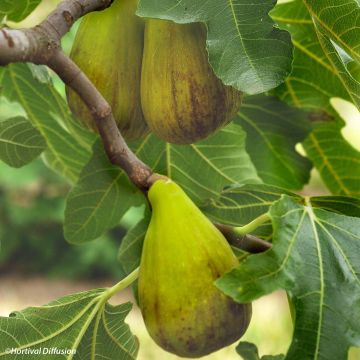

Araucaria araucana - Monkey Puzzle


Araucaria araucana - Monkey Puzzle


Araucaria araucana - Monkey Puzzle


Araucaria araucana - Monkey Puzzle


Araucaria araucana - Monkey Puzzle


Araucaria araucana - Monkey Puzzle


Araucaria araucana - Monkey Puzzle
Araucaria araucana - Monkey Puzzle
Araucaria araucana
Monkey Puzzle
Why not try an alternative variety in stock?
View all →This plant carries a 24 months recovery warranty
More information
We guarantee the quality of our plants for a full growing cycle, and will replace at our expense any plant that fails to recover under normal climatic and planting conditions.
From €5.90 for pickup delivery and €6.90 for home delivery
Express home delivery from €8.90.
From €5.90 for pickup delivery and €6.90 for home delivery
Express home delivery from €8.90.

Does this plant fit my garden?
Set up your Plantfit profile →
Description
The Monkey Puzzle, scientifically known as Araucaria araucana or A. imbricata, is a coniferous tree easily recognised by its impressive branches covered in shiny green scales. Despite its name, there are no monkeys in its native Andean forests. This tree prefers mild and humid climates, especially those humid in the summer and can tolerate different soil types. However, it can only withstand temperatures as low as -12°C. If you decide to plant this unique tree, make sure you have enough space as it can grow up to 20 metres (65 feet) tall and 8 to 9 metres (29 feet 6 inches) wide.
The Araucaria araucana, also known as the Chilean Pine, is a member of the Araucariaceae family. It is native to Chile and Argentina, specifically the watered slopes of the Andes up to 1700m (5577 ft) and the Nahuelbuta Range. It is considered the symbolic tree of Chile. In its natural environment, this tree can grow to a height of more than 25m (82 ft) with a trunk diameter of over 1m (3 ft 4 in). Although it has slow growth, it has impressive longevity, with some trees living over a 1,000 years. In our climate, it usually grows to a height of 15m (49 ft 2 in) and a width of 8m (26 ft 2 in). Its habit begins as a dome supported by interlaced branches, but as it grows, it takes on the shape of a large parasol carried by a very long stem.
The Araucaria imbricata tree has a straight trunk covered in thick, resinous bark that can be greyish or reddish, with a polygonal pattern created by old branch scars. The branches are arranged in horizontal spirals and are covered with small, flattened leaves that are pointed and sharp at their tips. The leaves are closely packed together, measuring 3 to 5cm (1.2 to 2 in) in length and 0.8 to 25cm (0.3 to 9.8 in) in width. This species usually produces either male or female cones, but some trees can have male and female cones. The cones form in the upper part of the crown of 30 to 40-year-old trees. Male cones are elongated, light brown when ripe, and 7 to 15cm (2.8 to 5.9 in) long. They are gathered in small groups at the end of the branches. Female cones are usually on their own or grouped in pairs, which can be the size of a melon. They give rise to large, edible seeds called pine nuts, which are highly valued on their own and in cooking.
In the 19th century, the Araucaria gained immense popularity in the United Kingdom and intrigued enthusiasts of exotic plants due to its eccentric appearance. Although the small plant in its pot may entice you with its picturesque look, it is important to consider its significant growth that will transform it into a giant in a few decades. Therefore, it is advisable to plant it at a distance from your house, where you can observe and admire it even on grey winter days. Planting this large conifer in a spacious garden, where its unique structure can stand out among other evergreen or deciduous trees, is best.
Report an error about the product description
Araucaria araucana - Monkey Puzzle in pictures
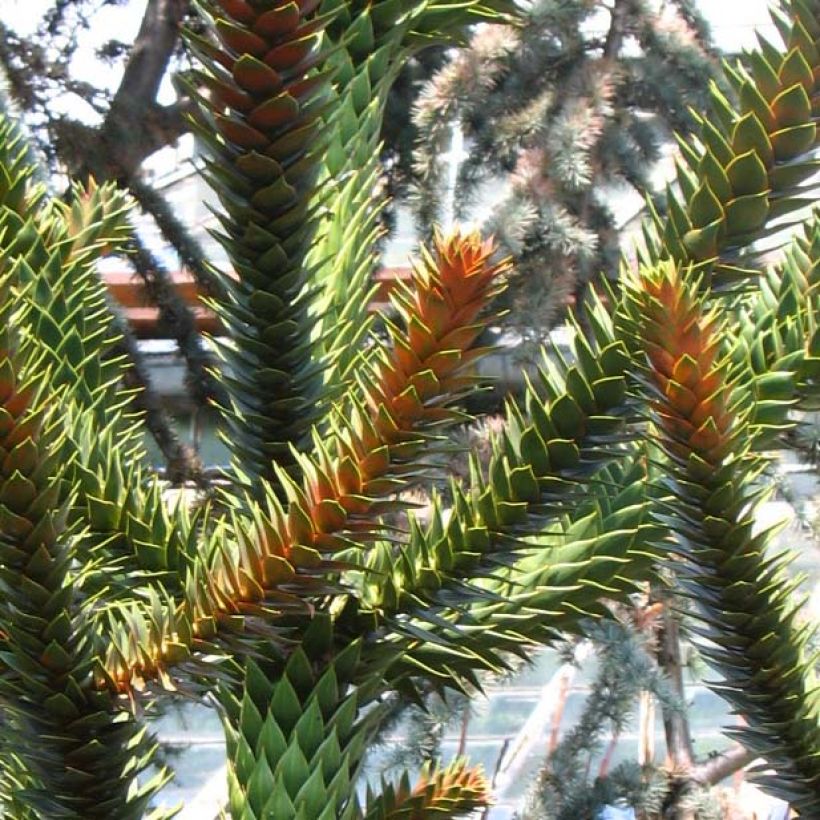





Plant habit
Foliage
Botanical data
Araucaria
araucana
Araucariaceae
Monkey Puzzle
Araucaria imbricata
South America
Other Shrubs A to Z
Planting and care
The Araucaria imbricata is a species of tree that grows well in soil that is well-drained and moist. It thrives in a sunny location with a mild climate, as it only tolerates temperatures as low as -12°C. This tree is not fond of hot weather or summer droughts and prefers mild and humid climates, even if they are misty during summer. It requires very little maintenance, except for regular watering during installation and the first two or three summers, especially if there is a drought. Spraying the foliage on young plants during summer for the first two or three years after planting is recommended. The tree grows fairly quickly and without problems when these conditions are met. It does not suffer from any specific diseases in our climates.
Pruning is not essential and should be done sparingly, as conifers do not tolerate pruning on wood that cannot regenerate young shoots. You should prune the branches carefully to balance the shape or reduce the tree's clutter. This should be done in October, as long as there are no frosts.
The best way to propagate this tree is by sowing in spring.
Planting period
Intended location
Care
-
, onOrder confirmed
Reply from on Promesse de fleurs
Striking foliage shrubs
Haven't found what you were looking for?
Hardiness is the lowest winter temperature a plant can endure without suffering serious damage or even dying. However, hardiness is affected by location (a sheltered area, such as a patio), protection (winter cover) and soil type (hardiness is improved by well-drained soil).

Photo Sharing Terms & Conditions
In order to encourage gardeners to interact and share their experiences, Promesse de fleurs offers various media enabling content to be uploaded onto its Site - in particular via the ‘Photo sharing’ module.
The User agrees to refrain from:
- Posting any content that is illegal, prejudicial, insulting, racist, inciteful to hatred, revisionist, contrary to public decency, that infringes on privacy or on the privacy rights of third parties, in particular the publicity rights of persons and goods, intellectual property rights, or the right to privacy.
- Submitting content on behalf of a third party;
- Impersonate the identity of a third party and/or publish any personal information about a third party;
In general, the User undertakes to refrain from any unethical behaviour.
All Content (in particular text, comments, files, images, photos, videos, creative works, etc.), which may be subject to property or intellectual property rights, image or other private rights, shall remain the property of the User, subject to the limited rights granted by the terms of the licence granted by Promesse de fleurs as stated below. Users are at liberty to publish or not to publish such Content on the Site, notably via the ‘Photo Sharing’ facility, and accept that this Content shall be made public and freely accessible, notably on the Internet.
Users further acknowledge, undertake to have ,and guarantee that they hold all necessary rights and permissions to publish such material on the Site, in particular with regard to the legislation in force pertaining to any privacy, property, intellectual property, image, or contractual rights, or rights of any other nature. By publishing such Content on the Site, Users acknowledge accepting full liability as publishers of the Content within the meaning of the law, and grant Promesse de fleurs, free of charge, an inclusive, worldwide licence for the said Content for the entire duration of its publication, including all reproduction, representation, up/downloading, displaying, performing, transmission, and storage rights.
Users also grant permission for their name to be linked to the Content and accept that this link may not always be made available.
By engaging in posting material, Users consent to their Content becoming automatically accessible on the Internet, in particular on other sites and/or blogs and/or web pages of the Promesse de fleurs site, including in particular social pages and the Promesse de fleurs catalogue.
Users may secure the removal of entrusted content free of charge by issuing a simple request via our contact form.
The flowering period indicated on our website applies to countries and regions located in USDA zone 8 (France, the United Kingdom, Ireland, the Netherlands, etc.)
It will vary according to where you live:
- In zones 9 to 10 (Italy, Spain, Greece, etc.), flowering will occur about 2 to 4 weeks earlier.
- In zones 6 to 7 (Germany, Poland, Slovenia, and lower mountainous regions), flowering will be delayed by 2 to 3 weeks.
- In zone 5 (Central Europe, Scandinavia), blooming will be delayed by 3 to 5 weeks.
In temperate climates, pruning of spring-flowering shrubs (forsythia, spireas, etc.) should be done just after flowering.
Pruning of summer-flowering shrubs (Indian Lilac, Perovskia, etc.) can be done in winter or spring.
In cold regions as well as with frost-sensitive plants, avoid pruning too early when severe frosts may still occur.
The planting period indicated on our website applies to countries and regions located in USDA zone 8 (France, United Kingdom, Ireland, Netherlands).
It will vary according to where you live:
- In Mediterranean zones (Marseille, Madrid, Milan, etc.), autumn and winter are the best planting periods.
- In continental zones (Strasbourg, Munich, Vienna, etc.), delay planting by 2 to 3 weeks in spring and bring it forward by 2 to 4 weeks in autumn.
- In mountainous regions (the Alps, Pyrenees, Carpathians, etc.), it is best to plant in late spring (May-June) or late summer (August-September).
The harvesting period indicated on our website applies to countries and regions in USDA zone 8 (France, England, Ireland, the Netherlands).
In colder areas (Scandinavia, Poland, Austria...) fruit and vegetable harvests are likely to be delayed by 3-4 weeks.
In warmer areas (Italy, Spain, Greece, etc.), harvesting will probably take place earlier, depending on weather conditions.
The sowing periods indicated on our website apply to countries and regions within USDA Zone 8 (France, UK, Ireland, Netherlands).
In colder areas (Scandinavia, Poland, Austria...), delay any outdoor sowing by 3-4 weeks, or sow under glass.
In warmer climes (Italy, Spain, Greece, etc.), bring outdoor sowing forward by a few weeks.



































